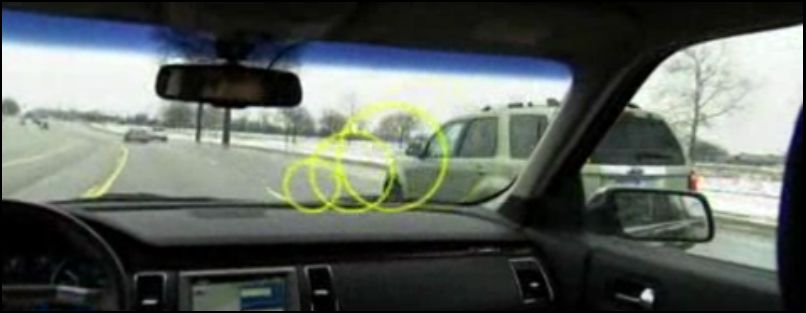
Kym: In the next two to five years, what could be the advances can we expect on the road from Ford to BMW all away across the industry?
Jim: Well, I think this all about working together in this technology enabling our vehicles to communicate with each other. Vehicles talking to other vehicles. Helping both drivers and have awareness of other vehicles on the road to help make safer roads, reduce congestion, improve fuel economy and performance.
Kym: So tell me specifically, you've mentioned fuel efficiency, you've mentioned the prevention of accidents but what information is going to be collected?
Jim: Well, as two vehicles approaching in intersection, their approaching speed, the potential if there could be a crash, if a vehicle is moving through an intersection. Maybe didn't stop in the stop center stop light. That information shared with another vehicle alert the driver to stop the vehicle or maybe eventually simulate autonomous work that applies the brakes for the driver.Kym: Ultimately where do you see this so this is something we are going to see the next two to five years. Correct, hit the road. What is the technology going to be like in two years versus five years?
Jim: It would still be at the very beginning of standardization and roll out. So maybe a little bit longer than two years, maybe closer to the five year and beyond. In so I think we gonna see a different kinds of application. We'll start to see applications that are more driver-assistance rather than controlling the vehicle or maybe stopping the vehicle for you. Maybe giving you alerts and warnings about a potential traffic jams, potential real time traffic. Today we talk about real time traffic but it's not giving that instantaneous, be it gets collected over time. But with this kind of information will get up to the minute, real time information as vehicles act like sensors in the road, taking up information and sharing that information for the benefit to all vehicles.Kym: So, why it has taken too long to get this cars to actually communicate?
Jim: It's all about the technology maturing. Leveraging electronics technology in us with our partners, people like Intel and the software guys as well, reducing the cost of the technology. Wifi networks, the pervasiveness of wifi networks, how they come along, along ways of standards so that cars can instantly meet. When they meet, start talking to each other and then they separate. And they start talking to each other and establishing those standards. And making those standards available across the industry to benefit everyone and semi-conductor manufacturersKym: What technology are we talking about this actually making it possible for these cars to communicate? You've mentioned wifi, you've mentioned Intel is also a part of it.
Jim: Yes, it is fundamentally wifi technology. It's called "Dedicated Short-Range Communication". It's version of the kind of wifi you have at home or you've used in your laptop today. But the difference is it starts talking, establishes a connection very quickly, transfers a information very quickly and then can break the connection because your cars are moving all the time. And that's a lot different than just sitting in your desk at home or in the office connected with your laptop.Kym: So the advances that your making your technology wise is to make sure that cars can talk to one another. How are we going to see that impact the price of the car?
Jim: We're leveraging the technology to make it very very affordable.Kym: What is that mean?
Jim: Well, electronics if you look at smart phones and where smart phones started the cost of the phones ten years ago, fifteen years ago and the cost of the telephone today. So being able to use the technology to drive the cost to not only to provide the performance to deliver this kind of features but it actually do a good value.Kym: So we're talking it will cost more but you don't know at least at this point whether it's going to be 50 dollars more or a thousand dollars more or even five thousand dollars more?
Jim: I don't think it will be in a five thousand dollar range but at this point we don't know exactly what the cost will be.Kym: So whose going to be the first to market? We'll is Ford going to be first?
Jim: Certainly, we want to be first in introducing the technology but we also know that the technology works a lot better when there are more cars on the road with it. We'll be anxious for our competitors to have the technology as well too. And then we can make use of the information that we have to make a better experience to our customers. So our cars can talk to them.Kym: But in the very beginning, it will probably be a little bit of a tough sell. I would imagine to consumers when it may not benefit them immediately.
Jim: I think It's a challenge for us and actually communicating what we were trying to do and so on in getting customers very interested is asking for whether it is in their new car or whether they're after market products that can retrofit. And we're working with that challenges well too to provide after market products to convert the vehicle to have this capability. That's real challenge going forward trying to accelerate the implementation of this new technology.- https://www.affordablecebu.com/